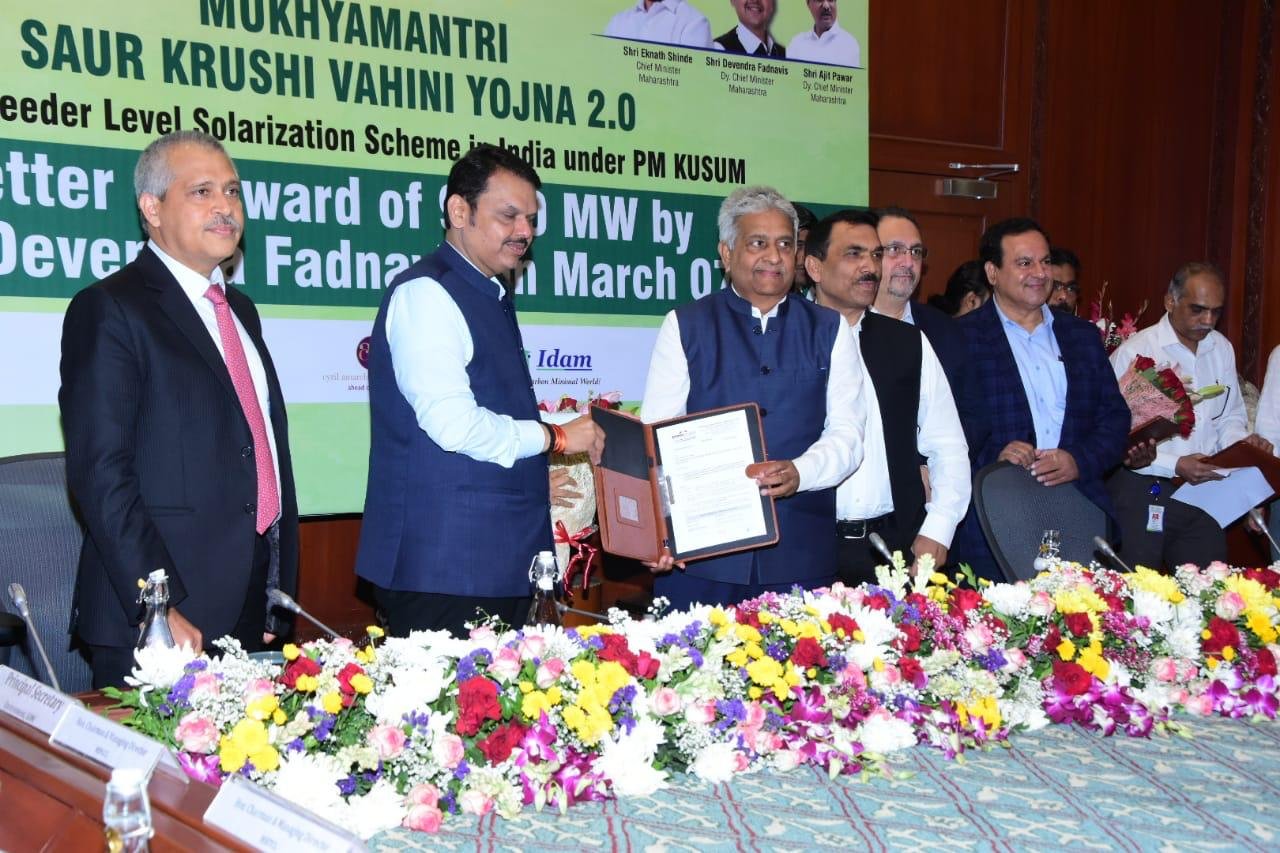Solar group aims for 50,000MW installed capacity by 2040
SJVN Limited is to develop 1,352MW solar projects at Nashik, Solapur, Ahmednagar and Pune under Mukhya Mantri Saur Krushi Vahini Yojana 2.0, of the Government of Maharashtra, costing about Rs.7,436 crores.
SJVN Chairperson & Managing Director, SJVN Geeta Kapur said on 8 Mar 2024 that the projects will be eligible for Central Financial Assistance, up to a maximum of 30% of the project cost.
The projects will be undertaken by subsidiary SJVN Green Energy Limited (SGEL) https://www.isolaralliance.org/ .
SJVN received the Letters of Award in the presence of Deputy Chief Minister of Maharashtra, Devendra Fadnavis; Director (Finance), SJVN, Akhileshwar Singh; and CEO, SGEL Ajay Singh at an event held in Mumbai on 7 Mar 2024 (see picture).
The projects have been bagged by SGEL https://www.seci.co.in/ through a competitive bidding process in a tender floated by MSEB Solar Agro Power Limited, Maharashtra.
The total capacity of the tender was 7,000MW and SGEL participated for 1,500MW-500MW in Round One and 1,000MW in Round Two. The aforesaid scheme has been launched for implementation of largest Feeder-Level Solarisation Scheme in India under component C of PM-KUSUM Scheme.
Looking ahead, SJVN aims to grow by setting ambitious targets to achieve the shared vision of 25,000MW installed capacity by the year 2030 and 50,000MW installed capacity by the year 2040. This shared vision has been formulated in line with the Government of India’s commitment of having 50% of total power capacity from non-fossil-fuel-based energy sources by the year 2030.
The “Mukhyamantri Saur Krushi Vahini Yojana” was introduced in June 2017, wherein decentralized solar projects of capacity 2 MW to 10 MW will be installed within 5 km radius of agriculture-dominated sub-stations.
The scheme was later reframed as Mukhymantri Saur Krushi Vahini Yojana 2.0 (MSKVY 2.0), with the target of 30% feeder solarization by 2025 through the implementation of 7,000 MW decentralized solar projects in fast-track mode, thus giving day-time electricity supply to farmers. Fiinews.com










